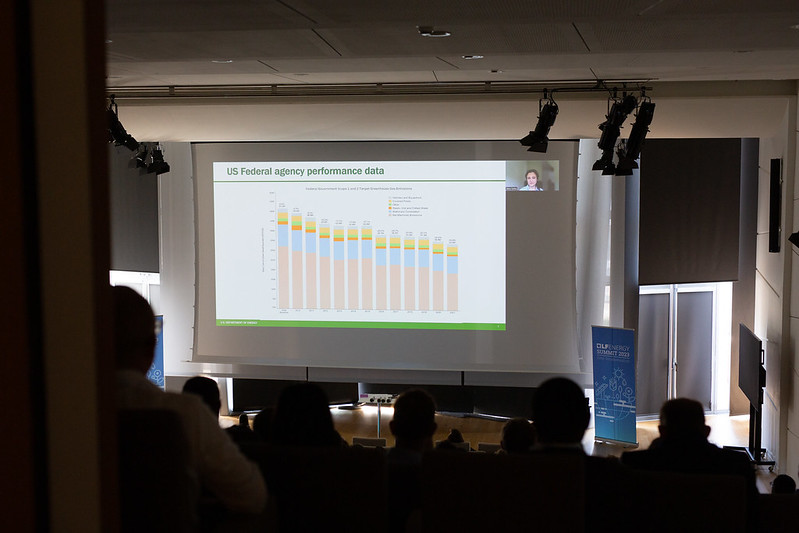LF Energy Summit Recap: Energy Challenges and Opportunities for U.S. Federal Agencies, Mary Sotos, FEMP
At LF Energy Summit 2023 Mary Sotos, Director of the Federal Energy Management Program (FEMP) at the Department of Energy, presented a keynote session titled “Energy Challenges and Opportunities for U.S. Federal Agencies” (video available below). In her address, Sotos shed light on the significant energy portfolio managed by the federal government, highlighting the scale of the challenges and the potential for transformative solutions. Here are the key takeaways from her keynote:
- Scale and Impact:
The U.S. federal government oversees an extensive energy portfolio, encompassing 350,000 buildings and 600,000 vehicles. With an average energy spend of $15 billion, the scale of energy consumption is immense. This presents a unique opportunity for federal agencies to lead by example in optimizing energy use, reducing greenhouse gas emissions, and enhancing resiliency.
- The Role of the Federal Energy Management Program (FEMP):
Sotos emphasized the crucial role of FEMP in supporting agencies at every stage of energy management. FEMP assists agencies in understanding energy policies, formulating strategies, identifying funding sources, and executing pathways for optimizing energy use across facilities, fleets, and electricity purchases.
- Policy Drivers:
Various policy drivers shape the energy management landscape for federal agencies. Sotos highlighted Executive Order 14057, also known as the Net Zero executive order. It mandates agencies to eliminate greenhouse gas emissions from most operations by 2030. This includes emissions from fuel use and electricity consumption. Agencies are tracked through a performance scorecard, ensuring progress toward meeting the targets.
- Energy Efficiency Challenges and Solutions:
While there has been some reduction in energy intensity across federal buildings since 2003, the progress has plateaued in recent years. This signals a significant opportunity for agencies to prioritize energy efficiency improvements. Upfront costs often pose a barrier, but a combination of direct funding and energy-saving performance contracts can make a substantial difference. FEMP encourages agencies to leverage these mechanisms.
- Transitioning to Carbon Pollution-Free Electricity:
To meet ambitious carbon reduction goals, federal agencies must transition to carbon-free electricity. The strategy involves a phased approach, focusing on preserving the grid mix, scaling energy storage, supporting regulatory reforms, deploying clean electricity generation, and emphasizing demand flexibility. FEMP is developing tools to assist agencies in screening and feasibility studies for procuring carbon pollution-free electricity, on-site renewable energy, and electric vehicle charging infrastructure.
Sotos’ presentation highlighted the challenges and opportunities for U.S. federal agencies in managing their energy portfolio. The scale of federal energy consumption creates a unique platform for demonstrating energy optimization, greenhouse gas reduction, and resiliency efforts. Through FEMP and policy drivers like Executive Order 14057, agencies are empowered to lead by example and implement transformative solutions. By prioritizing energy efficiency and transitioning to carbon pollution-free electricity, federal agencies can play a crucial role in advancing the nation’s energy goals.
